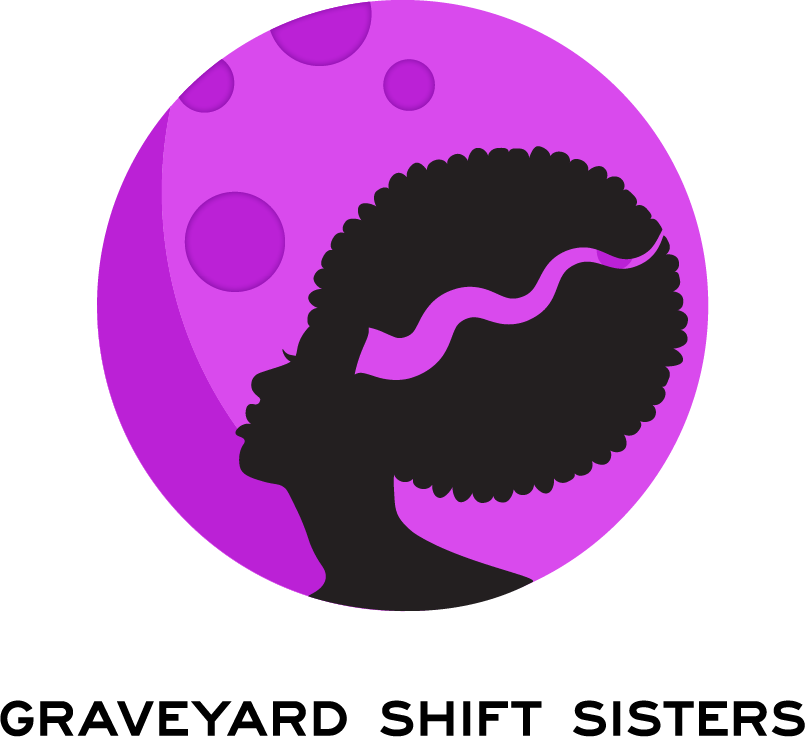A Horror Noire Syllabus
This syllabus was originally curated in 2018 & 2019 by the producers of the Shudder Original documentary, Horror Noire.
There are five overlapping and interwoven themes that Black horror encompasses in its 100+ history:
Social Ills & Morality Tales
Exploitation of Black Bodies
Fear of a Black Woman
Tokenism & Erasure
From Other to Icon
Essential Texts
Horror Noire: Blacks in American Horror Films from the 1890s to Present by Dr. Robin R. Means Coleman
Toms, Coons, Mulattoes, Mammies, and Bucks: An Interpretive History of Blacks in American Films, Fifth Edition by Donald Bogle
Recreational Terror: Women and the Pleasures of Horror Film Viewing by Isabel Cristina Pinedo
Framing Blackness: The African American Image in Film by Ed Guerrero
African American Gothic: Screams from Shadowed Places by Maisha L. Wester
Searching for Sycorax: Black Women's Hauntings of Contemporary Horror by Dr. Kinitra Brooks
Where No Black Woman Has Gone Before: Subversive Portrayals in Speculative Film and TV by Diana Adesola Mafe
Devil’s Advocates: Candyman by Jon Towlson
Darkly: Black History and America’s Gothic Soul by Leila Taylor
Online Resources
Black Horror Movies created by Mark H. Harris
My Final Girl - Black Women in American Horror created by Kristina Leath-Malin
Social Ills & Morality Tales
Black horror and Black representation in horror films produced stories that have addressed issues disproportionately effecting Black communities as well as moral narratives about good and evil, all utilizing supernatural and fantastic elements. Additionally, Hollywood depictions of Black Americans and Blackness have had a tendency to depict Black people inherently monstrous Others.
Recommended Reading
Dr. Robin R. Means Coleman. “Oscar Micheaux: Master of the Macabre” p. 30-34.“The Birth of the Black Boogeyman: Pre- 1930’s” p. 14-35
“Reforming Hollywood, Reinventing the Black Image”, “Making Over the Ape Film”, “Taking on Hollywood, the Devil Can’t Defeat Me” p. 70-78
“Hallelujah! Eloyce Gist” p. 78-82 in Horror Noire: Blacks in American Horror Films from the 1890s to Present. 2011.
Donald Bogle. “The Brutal Black Buck and The Birth of a Nation” p. 7-14 in Toms, Coons, Mulattoes, Mammies, and Bucks: An Interpretive History of Blacks in American Films (21st Century Edition)
J. Ronald Green. “‘Twoness’ in the Style of Oscar Micheaux” p. 3-26 in Black American Cinema. Edited by Manthia Diawara.
Maya Rhodan. “How a Howard Professor Resurrected Lost D.C. Evangelist Film Hellbound Train” Washington City Paper. April 11, 2012
Jacqueline Fulmer. Men Ain't All': A Reworking of Masculinity in Tales from the Hood, or, Grandma Meets the Zombie
Films
The Birth of a Nation (1915) dir. D.W. Griffith
Hellbound Train (1930) dir. Elyoce & James Gist
Son of Ingagi (1940) dir. Richard C. Kahn
The Blood of Jesus (1941) dir. Spencer Williams
Def By Temptation (1990) dir. James Bond III
Tales from the Hood (1995) dir. Rusty Cundieff
Bones (2001) dir. Ernest R. Dickerson
The Purge: Election Year (2016) dir. James DeMonaco
Exploitation of Black Bodies
The institution of slavery that enslaved Africans endured in the United States was a horrific reality where Black bodies were the constant site of exploitative practices and experimentation. Using Black men and women, often times as unknowing and unwilling test subjects has continued well into the 21st century. While not often depicted in horror films extensively, the films in this category do hold significant impact for addressing the issue.
Recommended Reading
Harriet A. Washington. “A Notoriously Syphilis-Soaked Race: What Really Happened at Tuskegee?” p. 157-189
“Caged Subjects: Research on Black Prisoners” “The Children’s Crusade: Research Targets Young African Americans” p. 271-299 in Medical Apartheid: The Dark History of Medical Experimentation on Black Americans from Colonial Times to the Present. 2006.
*Recommendation source: “Get Out” syllabus by Dr. Crystal Boson
Keith Phipps. “With The First Purge, the Purge series finally says something daring” The Verge. July 10, 2018.
Matty Stanfield. Slavery, Human Cruelty, Survival, Horror, Maternity and Rememory : Translating “Beloved” to the Screen
Films
White Zombie (1932) dir. Victor Halperin
The Leech Woman (1960) dir. Edward Dein
Blackenstein (1973) dir. William A. Levey
Dr. Black, Mr. Hyde (1976) dir. William Crain
Beloved (1998) dir. Jonathan Demme
The Girl With All The Gifts (2016) dir. Colm McCarthy
The First Purge (2018) dir. Gerard McMurray
Us (2019) dir. Jordan Peele
Fear of a Black Woman
Black women in horror films have long battled images that make them appear one-dimensional: evil, voodoo spiritual practitioners, background/forgotten servants, and dangerous seductresses. In horror films, Black women at times have been the source of evil that white protagonists have had to defeat. The autonomy of Black women here has been portrayed as a threat to the white, patriarchal power structure and in defiance against a sexist society. Additionally acting as human heroines, Black women have a complex and complicated array of images in horror cinema.
Recommended Reading
Dr. Robin R. Means Coleman. “If Loving You Is Wrong, I Don’t Want to Be Right” p. 57-64.“Enduring Women” p. 131-142.in Horror Noire: Blacks in American Horror Films from the 1890s to Present. 2011.
bell hooks. “The Oppositional Gaze: Black Female Spectators” p. 307-321 in Feminist Film Theory: A Reader. Edited by Sue Thornham. 1999, 2006.
Rooney Elmi. “Black Femininity as the Monstrousness: Exploring Race, Gender, Sexuality, & Diasporic Culture In Blaxploitation Horror” Video Essay. Vimeo. 2017.
Dr. Kinitra Brooks. “Finding the Humanity in Horror: Black Women's Sexual Identity in Fighting the Supernatural”. Sexing the Colorlines: Black Sexualities, Popular Culture, and Cultural Production. 2011.
Mark H. Harris. “Scary Sistas: A Brief History of Black Women in Horror Films”. Blackhorrormovies.com
Manthia Diawara and Phyllis Klotman. “Ganja and Hess: Vampires, sex, and addictions” Jump Cut: A Review of Contemporary Media. April 1990.
Films
Chloe, Love Is Calling You (1934) dir. Marshall Neilan
Ouanga (1936) dir. George Terwilliger
The Devil’s Daughter (1939) dir. Arthur H. Leonard
Ganja & Hess (1973) dir. Bill Gunn
Scream, Blacula, Scream (1973) dir. Bob Kelljan
Abby (1974) dir. William Girdler
Sugar Hill (1974) dir. Paul Maslansky
Vamp (1986) dir. Richard Wenk
Eve’s Bayou (1997) dir. Kasi Lemmons
Tokenism & Erasure
What do horror films tell an audience when there are no Black characters in the narrative? And the first to die? Or simply just the victim with no real story? Throughout horror film history, Black characters have almost been exclusively defaulted to the sidekick, comedic, sensible, or otherwise and probably most egregiously, one for the body count. This likely wouldn’t be such a topic for debate if we were equally given more centralized roles during these periods, but these concerns surrounding invisibility do tell us a lot about the Black experience in America.
Recommended Reading
Dr. Robin R. Means Coleman. “Black Invisibility, White Science, And A Night With Ben: 1950s-1960s”. p. 93-117
“We Always Die First—Invisibility, Racial Red-Lining, And Self Sacrifice: 1980s” p. 145-168 in Horror Noire: Blacks in American Horror Films from the 1890s to Present. 2011.
Herman Gray. “Reaganism and the Sign of Blackness” p. 14-35 in Watching Race: Television and the Struggle for Blackness. 1995.
Matt Barone. “Fact Check: Do Black Characters Always Die First in Horror Movies?” Complex. October 31, 2013.
Mark H. Harris. “White Fright; Or, Why Are There No Black People in Haunted House Movies?”. Blackhorrormovies.com
Mark H. Harris. “The Black Death: A Brief History of Black People Dying in Horror Movies”. Blackhorrormovies.com
Films
King of the Zombies (1941) dir. Jean Yarbrough
Spooks Run Wild (1941) dir. Phil Rosen
Creature from the Black Lagoon (1954) dir. Jack Arnold
The Horror of Party Beach (1964) dir. Del Tenney
Alien (1979) dir. Ridley Scott
New Year’s Evil (1980) dir. Emmett Alston
The Shining (1980) dir. Stanley Kubrick
The Thing (1982) dir. John Carpenter
Friday the 13th Part III (1982) dir. Steve Miner
A Nightmare on Elm Street 3: Dream Warriors (1987) dir. Chuck Russell
Angel Heart (1987) dir. Alan Parker
A Nightmare on Elm Street 4: The Dream Master (1988) dir. Renny Harlin
The Serpent & The Rainbow (1988) dir. Wes Craven
Jason Goes To Hell: The Final Friday (1993) dir. Adam Marcus
The Craft (1996) dir. Andrew Fleming
Scream 2 (1997) dir. Wes Craven
From Other to Icon
Aside from the film itself, one of the best things to come out of Jordan Peele’s Get Out is the vast discussions on Black protagonists in horror films. But how did we get here? And where will the success of Get Out take Black filmmakers and their stories in horror cinema? The Black heroes and heroines found in horror film history have set the foundation for the flourish we’re seeing in the genre today.
Recommended Reading
Dr. Robin R. Means Coleman. “Scream, Whitey, Scream—Retribution, Enduring Women, And Carnality” p. 118-144
“Black Is Back! Retribution And The Urban Terrain: 1990s” p. 169-197 in Horror Noire: Blacks in American Horror Films from the 1890s to Present. 2011.
Isabel Cristina Pinedo. “Race Horror” p. 111-133 in Recreational Terror: Women and the Pleasures of Horror Film Viewing. 1997.
Mark H. Harris. “The State of Black Horror: Get Out and Beyond” Blackhorrormovies.com
Frances Gateward. “Daywalkin' Night Stalkin' Bloodsuckas: Black Vampires in Contemporary Film” Genders. 1998-2013.
Aviva Briefel and Sianne Ngai. “’How much did you pay for this place?’ Fear, Entitlement, and Urban Space in Bernard Rose's Candyman” in Horror Film Reader. Edited by Alain Silver & James Ursini. 2000.
Jon Towlson. “4. Candyman and the Return of the Repressed” p. 59-94 in Devil’s Advocates: Candyman. 2018.
Harry Benshoff. “Blaxploitation horror films: Generic reappropriation or reinscription?” in The Cult Film Reader edited by Ernest Mathijs and Xavier Mendik. 2008.
Diana Adesola Mafe. “Last One Standing: Alien vs. Predator” p. 45-68 in Where No Black Woman Has Gone Before: Subversive Portrayals in Speculative Film and TV. 2018.
Dianca London. “’Get Out’ And The Revolutionary Act Of Subverting The White Gaze”. The Establishment. March 9, 2017.
Mark Harris. “Will Hollywood Learn Anything From Get Out’s Success?” Vulture. May 1, 2017.
Films
Night of the Living Dead (1968) dir. George A. Romero
Dawn of the Dead (1978) dir. George A. Romero
Blacula (1972) dir. William Crain
The People Under the Stairs (1991) dir. Wes Craven
Candyman (1992) dir. Bernard Rose
Tales from the Crypt: Demon Knight (1995) dir. Ernest R. Dickerson
Blade (1998) dir. Stephen Norrington
AVP: Alien vs. Predator (2004) dir. Paul W.S. Anderson
Attack The Block (2011) dir. Joe Cornish
Get Out (2016) dir. Jordan Peele
Sweetheart (2019) dir. J.D. Dillard
Independent Black Horror Filmmakers to Watch
Suicide By Sunlight (2019) dir. Nikyatu Jusu
White Knuckle (2018) dir. Xavier Coleman
Wake (2010) dir. Bree Newsome
Patty Cake (2014) dir. Phonz Williams
Goodnight My Love (2012) dir. Kellee Terrell
Paralysis (2015) dir. R. Shanea Williams
Mariner (2016) dir. Thyrone Tommy
Ojuju (2014) dir. C.J. Obasi
Danger Word (2013) dir. Luchina Fisher
FLESH (2016) dir. Monika Estrella Negra
Afterbirth (2016) dir. Eboni Boykin
Newborn (2014) dir. Simret Cheema-Innis
Prey (2015) dir. Sunny King
Lost (2015) dir. Tananarive Due
Altschmerz (2016) dir. Somica Spratley
Black In, Red Out (2016) dir. Monica Moore-Suriyage
White Knuckle (2018) dir. Xavier Coleman
Venefica (2016) dir. Maria Wilson
Page One (2017) dir. Don P. Hooper
Blame (2014) dir. Kellee Terrell
Little Red’s Pie (2016) dir. Rae Shaw
Brown Wreck-Loose (2017) dir. Tristian Montgomery
Searching For Isabelle (2017) dir. Stephanie Jeter
Night of the Witch (2017) dir. Zena Sade Dixon
Open The Door (2017) dir. Taylor Black
Skin Tight (2018) dir. Ciara Boniface
Blood Runs Down (2018) dir. Zandashé Brown
Hair Wolf (2018) dir. Mariama Diallo

